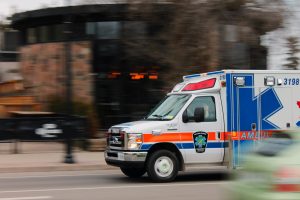The Food and Drug Administration requires Narcan information to be present on the labels of prescription opioids.
The Food and Drug Administration (FDA) recently announced it would require drug makers to include information about naloxone on the labels of opioid medications. It will also require similar labels for the three approved drugs used to treat opioid addiction: methadone, buprenorphine, and naltrexone. The decision was made after the government released data showing U.S. drug overdose deaths reached an all-time high in 2019 and the coronavirus pandemic has led to yet another surge in overdoses. Naloxone, or Narcan, is widely used in the to reverse opioid overdoses.
“Today’s action can help further raise awareness about this potentially life-saving treatment for individuals that may be at greater risk of an overdose and those in the community most likely to observe an overdose,” Stephen Hahn, the FDA commissioner, said.
The Department of Health and Human Services (HHS) recommended in 2018 that doctors prescribe naloxone to patients receiving an opioid prescription to reduce the risk of overdose. Health insurance providers and local governments have also made naloxone even more widely available by covering the medication at no cost and issuing “standing orders” without a prescription at pharmacies.

In fall 2019, the Centers for Disease Control and Prevention (CDC) reported the number of overdose fatalities was decreasing as naloxone began to be more widely distributed. And, from 2017 to 2018, the agency indicated number of naloxone prescriptions dispensed by U.S. pharmacies doubled from 271,000 to 557,000.
“It is clear from the data that there is still much needed education around the important role naloxone plays in reducing overdose deaths,” reported CDC Director Robert R. Redfield, M.D. “The time is now to ensure all individuals who are prescribed high-dose opioids also receive naloxone as a potential life-saving intervention. As we aggressively confront what is the public health crisis of our time, CDC will continue to stress with healthcare providers the benefit of making this overdose-reversing medicine available to patients.”
“Thousands of Americans are alive today thanks to the use of naloxone,” echoed HHS Secretary Alex Azar. “Giving people a chance to survive an opioid overdose and safely enter recovery is one of the five key pillars of our HHS strategy for ending the overdose epidemic. With help from Congress, the private sector, state and local governments, and communities, targeted access to naloxone has expanded dramatically over the last several years, but today’s CDC report is a reminder that there is much more all of us need to do to save lives.”
The federal agencies warn that labeling prescription painkillers will not address the crippling effect illicit opioids have had on users. Last year, a test strip became available that allows people who use street drugs such as cocaine and heroin to test whether their drugs are laced with fentanyl. The technology was originally developed by a Canadian biotech company BTNX to test urine samples, but the strips produce the same results when they’re dipped in the residue of cooked heroin or when a little water is added to empty bags of cocaine. However, the powerful synthetic opioid that tends to be included in street drugs is still a major contributor to the overdose death rate.
Sources:
FDA says opioid labels must include information about naloxone


Join the conversation!